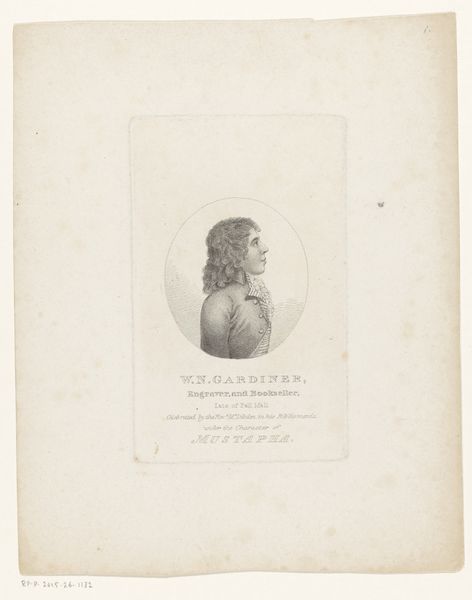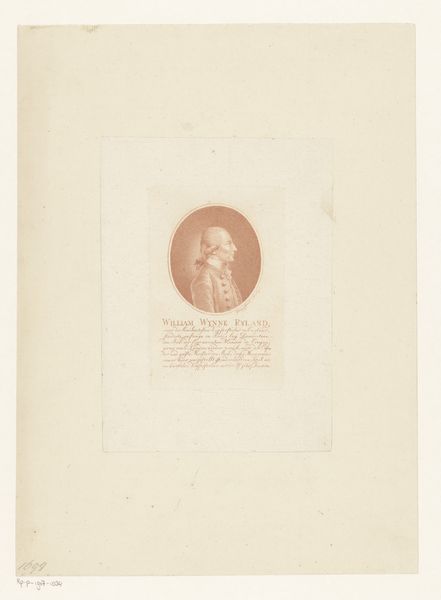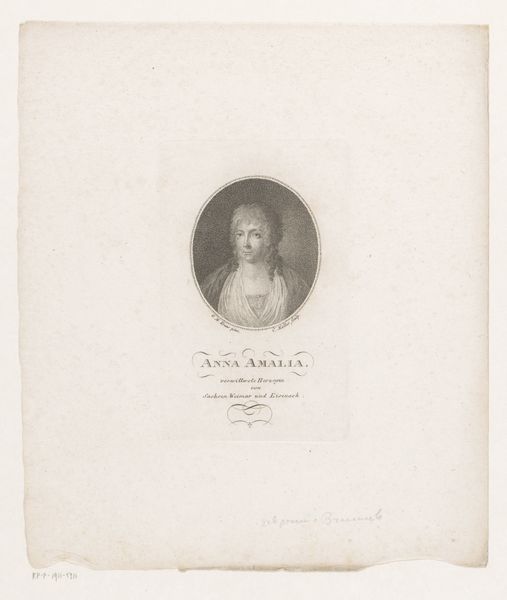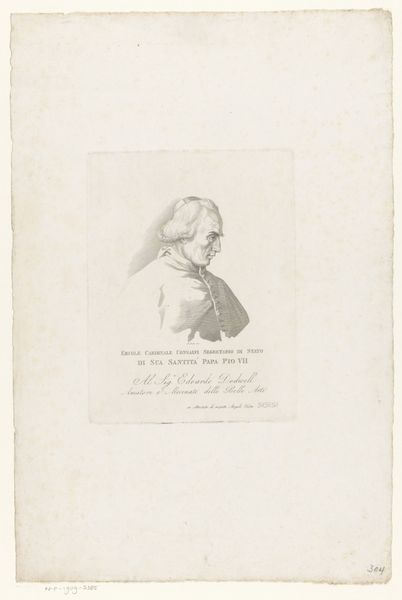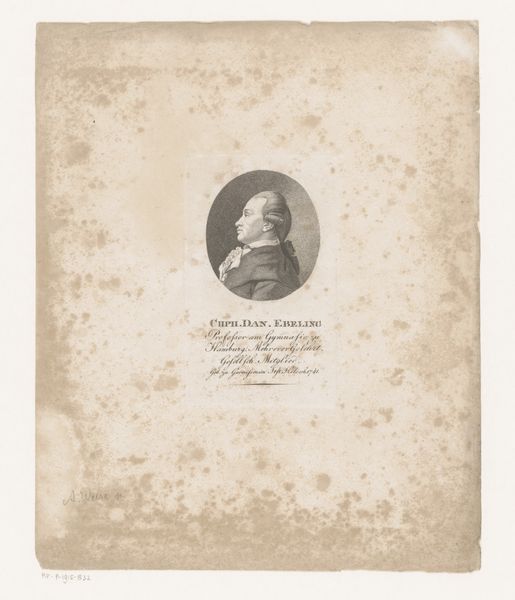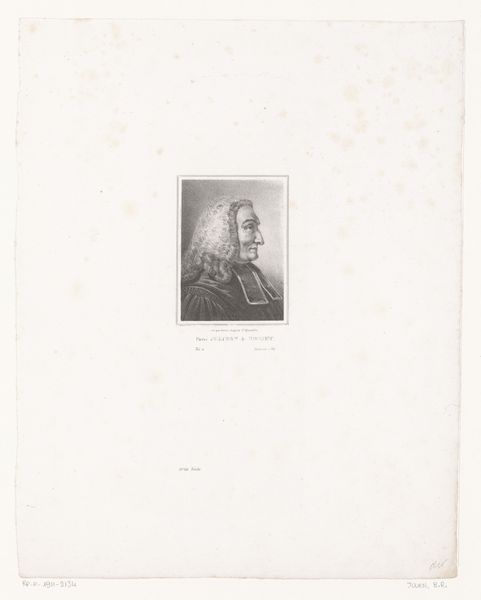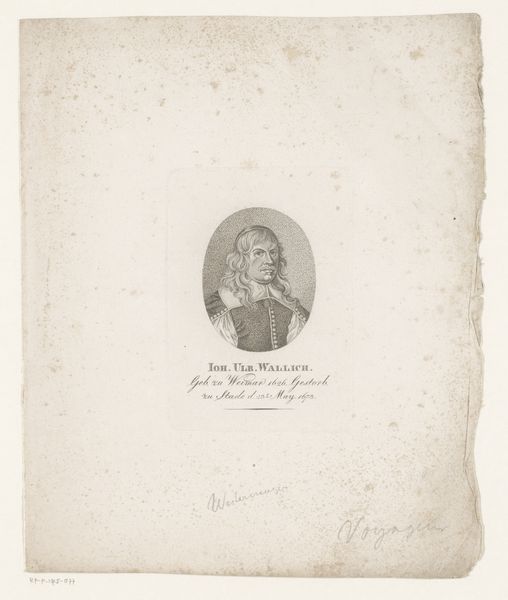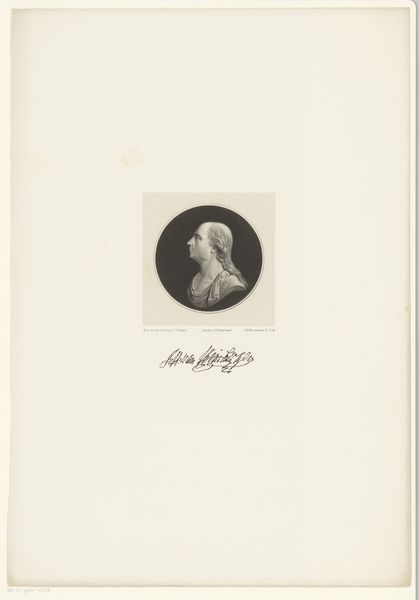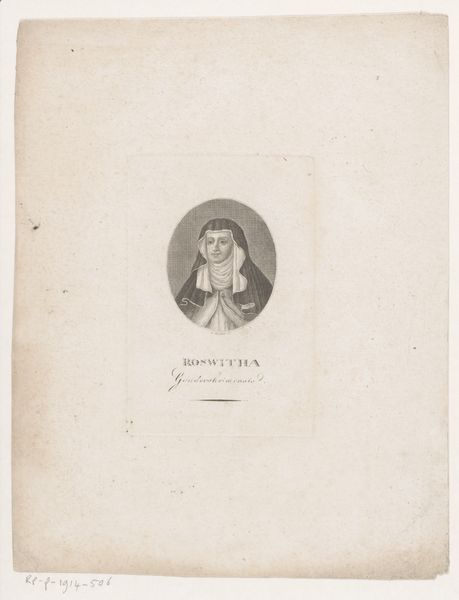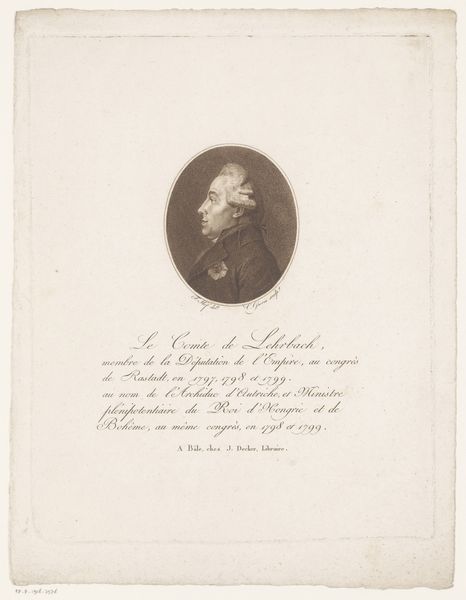
print, engraving
#
portrait
#
neoclacissism
#
aged paper
#
toned paper
# print
#
old engraving style
#
personal sketchbook
#
history-painting
#
engraving
Dimensions: height 164 mm, width 95 mm
Copyright: Rijks Museum: Open Domain
Curator: Welcome. Here we have "Portret van Joseph de Beauchamp," dating from 1775 to 1834. It’s currently held in the Rijksmuseum, created using the engraving medium. Editor: There's a kind of austere charm in how minimal it is. The oval frame isolates the subject so distinctly. The texture in the coat, contrasted with the paper itself, really holds the viewer's attention. Curator: Indeed. Joseph de Beauchamp was a celebrated astronomer. Note how this print captures the essence of Neoclassicism—a renewed interest in classical antiquity which carried overt and covert socio-political symbolism at the time. The scientific community experienced an Enlightenment, and the detailed rendering of Beauchamp’s features is typical of the era's focus on reason and observation. Editor: Yes, you can see that meticulous attention to detail in the rendering of the folds in his turban, and the delicate play of light and shadow creating a real sense of volume and texture in what might otherwise have been a flat, graphic print. Curator: Prints like these were vital for disseminating images of important figures, standardising public image. The choice to portray him with Middle Eastern garments is telling, because he worked as French Consul in Baghdad and later Oman. This wasn't just a neutral portrait, but a calculated statement about Beauchamp's identity and role. Editor: Do you think the rather sparse shading might imply some psychological depth? A kind of restrained emotion, perhaps? The eyes seem so fixed and unblinking. It does convey the scientist's objectivity and scrutiny. Curator: Perhaps. One could also say it reflects a sense of authority, conferred onto Beauchamp both by his scientific credentials and by the era in which he lived. Editor: I love the direct gaze – it's all line, shape, texture in perfect alignment to create, well, presence. A statement on the art of representing character with minimalistic geometry. Curator: And hopefully we've shown how portraits can reveal far more about an era's priorities than one might first assume. Editor: Yes. By considering historical background, combined with close consideration of the formal devices, an image comes to life beyond the flat sheet.
Comments
No comments
Be the first to comment and join the conversation on the ultimate creative platform.
